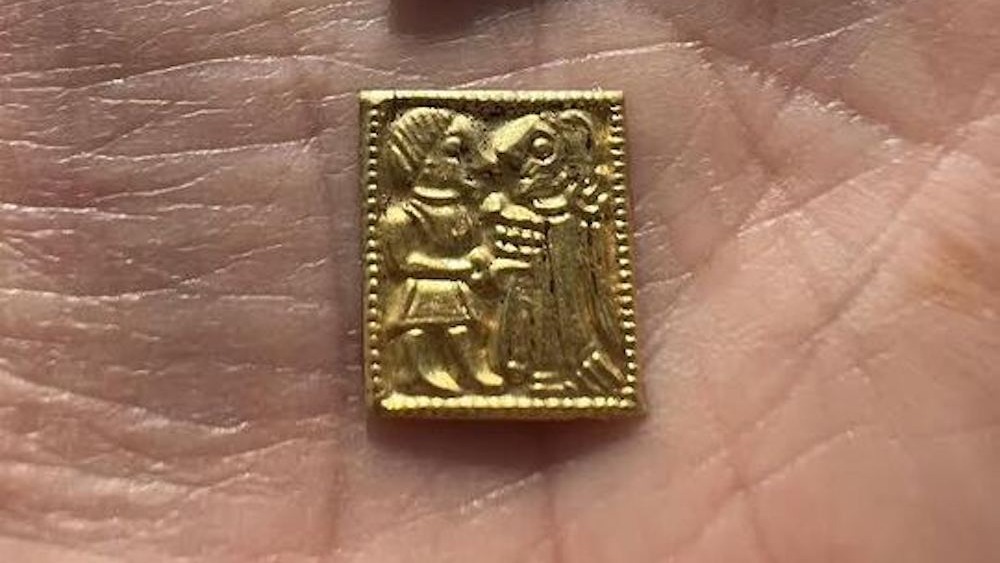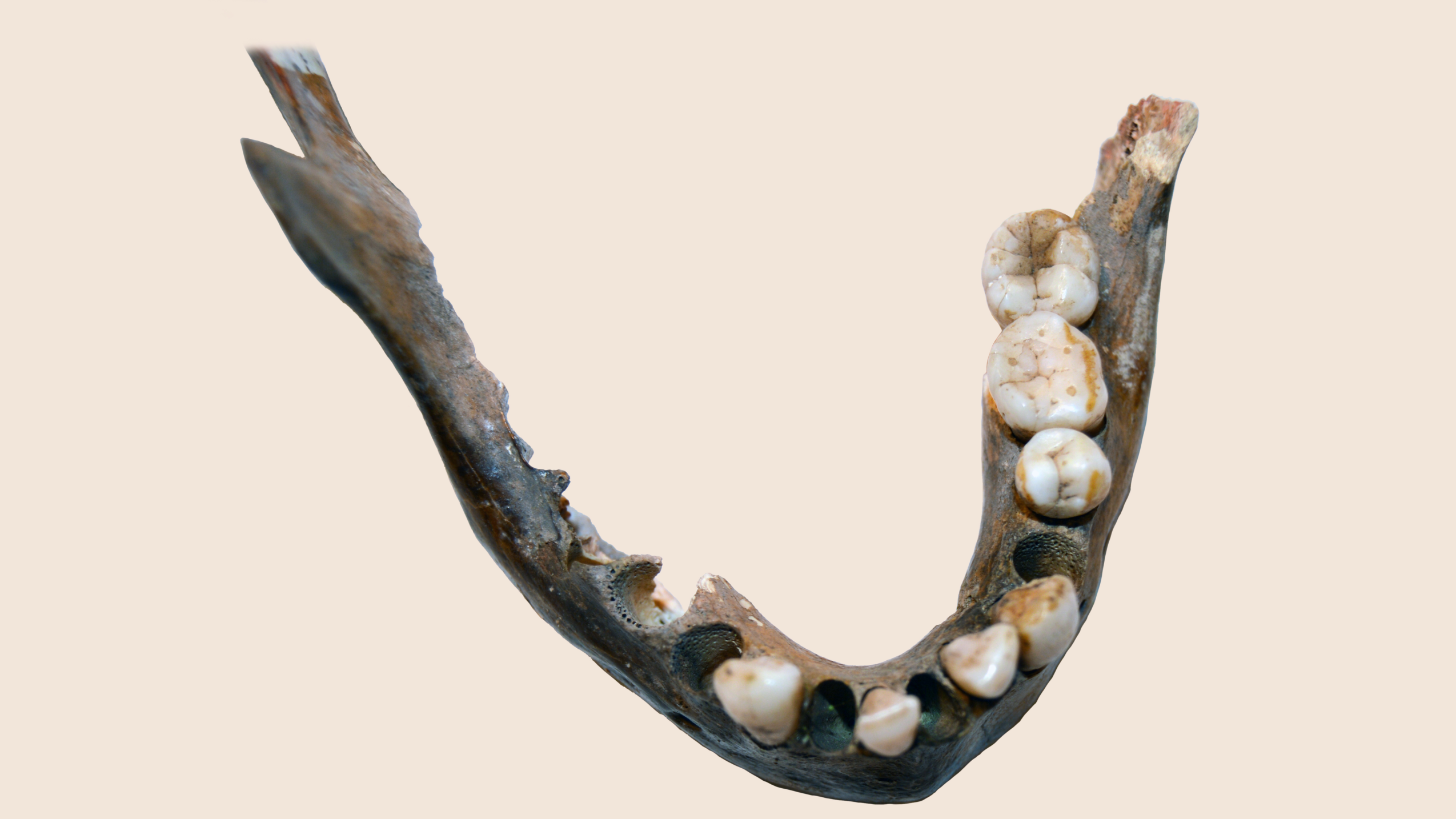1,400-year-old gold figures depicting Norse gods unearthed at former pagan temple
Archaeologists in Norway unearthed dozens of tiny gold-foil figures at a former pagan temple.

Archaeologists have discovered 35 miniature gold-foil depictions of Norse gods tucked inside the remnants of a pagan temple in Norway.
The gold foils, which are flat and as thin as a piece of paper, contain etched motifs depicting the god Frøy and the goddess Gerd and date to the Merovingian period in Norway, which began in 550 and continued into the Viking Age, according to Science Norway. The foils may have been used as sacrificial offerings.
The gold pieces lack holes, so it's unlikely that they were worn as jewelry. The first gold foils were discovered in Scandinavia in 1725 and were eventually labeled as "gullglubber," which translates to "golden old men."
"This is a very special find," Kathrine Stene, the archaeologist who led the excavation this summer, told Live Science. "Each foil is quite small and measures about the size of a fingernail."
Several of the roughly three dozen gold foils were packed inside postholes that once contained support beams for the building in Hov, a village in southern Norway, while others were found where the structure's walls once stood.
Archaeologists originally discovered the small building back in 1993 along with two gold foils. Additional excavations in the 2000s revealed 28 more gold pieces.
Related: When unfolded, these ancient gold foil figures reveal embracing couples
Get the world’s most fascinating discoveries delivered straight to your inbox.
Although similar foils have been found in Norway and across Scandinavia — including in similar pagan buildings in Bornholm, Denmark, and Uppåkra, Sweden — this is the first time that archaeologists have discovered the foils in a smaller structure.
"But more of these small pieces of gold keep appearing," Ingunn Marit Røstad, an archaeologist at the Museum of Cultural History in Oslo, told Science Norway. "Either through excavation or with metal detectors. So, more could pop up in various places in Norway as well."
During a separate excavation, archaeologists discovered 30 similar foils elsewhere in Hov.
"Normally we find these in special buildings that were once used for religious purposes," Stene said. "We were surprised to find them in such a small building."
By looking at the postholes, researchers could measure the structure's footprint and determined that it was roughly 49 feet (15 meters) in length. In comparison, most homes during that time period were between 66 and 98 feet (20 to 30 m) long.
There's been some speculation about how the foils got there. While some researchers have suggested the gold pieces were used as an admission fee to enter the building, Stene said it's more likely that the foils were placed there during construction.
"Based on where we found them where the walls once stood and inside the postholes, they couldn't have been used as tickets to enter into the building," Stene said. "It's more likely that they were used as more of a sacrifice so that this special building would have a good life.
"We're happy that we found them," she added. "This was considered a sacred place to pagans."
Jennifer Nalewicki is former Live Science staff writer and Salt Lake City-based journalist whose work has been featured in The New York Times, Smithsonian Magazine, Scientific American, Popular Mechanics and more. She covers several science topics from planet Earth to paleontology and archaeology to health and culture. Prior to freelancing, Jennifer held an Editor role at Time Inc. Jennifer has a bachelor's degree in Journalism from The University of Texas at Austin.
